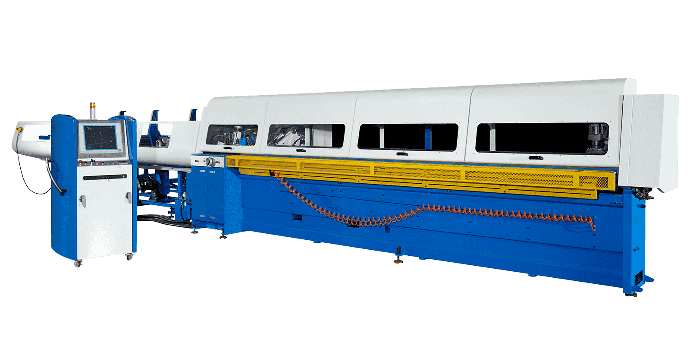
Cutting tubes is indeed one of the most complex jobs most manufacturers have to deal with. Firstly, taking appropriate measurements is absolutely necessary so that all the cut pieces from a single tube can be of the same length. Secondly, a proper cutting machine should be used to ensure the cut surfaces are uniform and smooth, with no wrinkle or bumpiness. Although several types of saw machines are used to cut the pipes as per the project requirements, it is tube saw that has gained huge popularity in recent times.
A tube saw is specifically designed to cut pipes of varying material thickness, length, and other variables into desired number of pieces, each having equal length. Over the years, this machine has been further improved in several ways to increase the overall productivity and process efficiency. So, before you invest in a tube saw for your project, knowing about its types, features, and other details will be much more beneficial for the decision-making process.
Working principle of a tube saw
The working principle of a tube saw is always similar to that of the cutting machine implemented to cut metal sheets. Each saw comes with a simple linear blade having a sharp, thin edge on one side or a circular saw with toothed jaws. Depending on the type of tube saw you are using, the working principle will vary. Below we have explained the working of the two different tube saws usually found on the market.
Bandsaw tube cutting
In bandsaw sawing, the workpiece is placed between grip jaws to prevent any further movement during the actual cutting process. Its blade comes with toothed edges that move in continuous loops to form the cuts along the outer edge of the tube or pipe. The movement of the blade is controlled by a wheel system, which is why achieving accuracy and precision cuts on each piece is quite easy with the bandsaws.
Circular cold sawing
The name, circular cold saw, implies that less heat is generated during the cutting process, which indeed prevents material damage. Here, the circular blade with toothed edge is revolved around the workpiece to make the desired cuts at right angles or a preset angle as decided by the integrated software application. The heat generated due to the friction between the cutting blade and the tube material is transferred to the chips formed due to cutting, thereby ensuring minimal thermal damage and structural distortion of the cut tube pieces.
Features of a tube cutting saw
Now that we have discussed the working principle of the tube saws based on the type, it’s time we shift our focus on learning more about its features.
Higher cutting accuracy
Every tube saw you will find on the market comes with higher cutting accuracy as its primary feature. The machine is controlled by a software that ensures each cut made is accurate and highly precise as per the required product design. Even if the cutting angle is different from right angles, the tube saws can exercise accuracy and precision in the same way. So, investing in the tube sawing machine will help you produce the cut tubes and pipes having the exact dimensional and design as per the project specifications.
Internal cutting jaws
Several tube sawing machines nowadays come with internal cutting jaws. These are inserted into the workpiece so that it can be cut along the internal surface instead of the usual external face. Internal cutting jaws prevent material damage and surface etching for tubes with higher material thickness. Furthermore, they reduce the cutting speed since the surface area to be cut is much less for internal surfaces.
Regulated cutting speed
One of the primary features of the tube sawing machine is the regulated cutting speed. Professionals will be able to vary the speed at which the rotor blades move depending on the cut required. For instance, if the expected friction heat to be generated during sawing is substantially high, the rpm speed of the cold circular sawing blade can be lowered during the operation itself to ensure the heat can be properly withdrawn from the workpiece.
Circular toothed cutter
Since a tube saw comes with a circular blade having toothed jaws, it can produce clean and uniform cuts along the tube’s length in a single rotation. Unlike linear cutters, it won’t have to go back and forth to make the cuts, thereby ensuring the cut surfaces are clean and uniform, without any structural deformation like bumps or wrinkles. It is also one of the reasons why tube saws are used to cut the pipes and tubes of different materials instead of the regular cutters like table saws or jigsaws.
Adjustable workbench
Most tube saws come with an adjustable workbench that can be easily adjusted to fit in the workpiece without any hassle. Therefore, you won’t have to buy different sawing machines to cut pipes having varied material thicknesses, lengths, and diameters.
Conclusion
In this article, we have explained the two major types of tube saw being used in the manufacturing industry. Therefore, you won’t have to worry about the cuts not being precise or the workpiece getting damaged due to high friction heat or excessive pressure.








